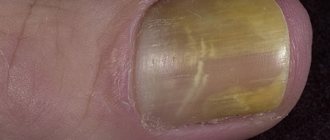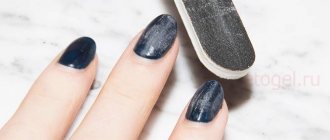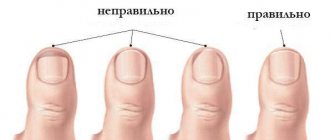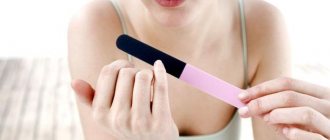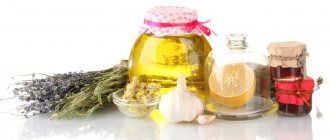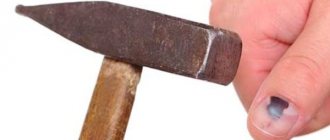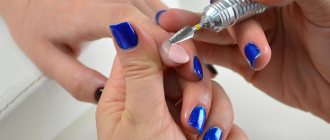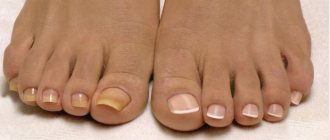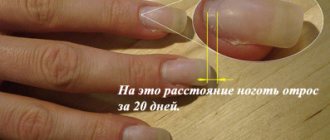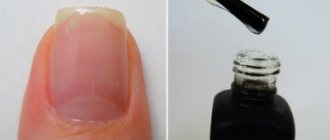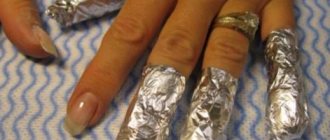Paronychia of the finger
Paronychia (paronychia, periungual panaritium) is an abscess of the finger near the nail. As a rule, this is an infectious disease that causes an acute inflammatory process of tissues. Localized near the nail, along the perimeter or under it. Usually the causative agent of inflammation is staphylococcus or streptococcus, which penetrates through all sorts of microcracks, wounds, injuries - any violation of the integrity of the surface of the periungual tissues.
Sore finger on the hand near the nail (paronychia) photo
Sore toe near the nail (paronychia) photo
Paronychia occurs:
- spicy. It develops rapidly and appears suddenly. The cause is often accidental injury followed by infection.
- chronic. It may develop more slowly, be recurrent and less acute. This type of inflammation of the periungual fold usually occurs due to systemic diseases, nail fungus and weak immunity.
Therapy
Treatment of fungal infections on the legs is carried out on an outpatient basis. Complex therapy includes pharmaceutical and folk remedies.
When a bacterial infection occurs, anti-inflammatory, antibiotic and bactericidal agents are added to the treatment regimen.
Medicines
Fungus between the fingers is difficult to treat. Therapy for the disease lasts from 1 month to a year . Mild forms of pathology are eliminated faster and easier. The disease cannot be ignored in the early stages, when the first mild symptoms appear. If you experience discomfort in your toes, you should immediately visit a doctor. Erased initial symptoms disappear when treated with external agents (Miconazole, Imazol, Nizoral, Zalain). To suppress severe forms, oral medications are added to topical medications. In advanced cases, corticosteroids are prescribed for treatment in combination with antimycotics.
Anti-inflammatory therapy
Inflammation is relieved using 20-minute foot baths with the addition of manganese permanganate. After the procedure, the skin is dried and cleaned of dead and flaking tissue. Then treated with an antiseptic:
- make an application with boric acid or resorcinol,
- Fukortsin.
When the weeping disappears, the epithelium dries out, the lesions are lubricated:
- brilliant green,
- Fluorocort,
- Ultralan with corticosteroids.
Antimycotic drugs begin to be used after suppression of inflammation.
Treatment for bacterial infection
If the fungus is complicated by a bacterial infection, combined medications are used. Apply to damaged epithelial tissues:
- Betamethasone,
- Akriderm,
- Pimafucort is an ointment based on hydrocortisone,
- Natamycin,
- Neomycin.
Systemic treatment with drugs in tablets
Various complications develop against the background of fungal infections. Patients develop allergies, erysipelas, eczema, and concomitant pathologies become aggravated.
Allergic reactions and itching are relieved with antihistamines:
- Suprastin,
- Diazolin,
- Zyrtec.
Simultaneously with antiallergenic tablets, injections of 10% calcium gluconate are given. To cure the disease, antimycotic drugs in tablets or capsules are used.
Oral medications are used for extensive lesions, when a fungal infection from the toes spreads to the feet, affecting the sides and sole.
Patients are prescribed tablets based on terbinafine:
- Lamisil,
- Terbinafine-Teva.
The fungus is effectively suppressed by drugs containing itraconazole:
- Orungal,
- Irunin.
To relieve a fungal infection, medications containing fluconazole are used. Tablets with this active substance are called:
- Diflucan,
- Flucosan,
- Mycomax.
Basic therapy is supplemented with medications that improve certain functions of internal organs:
- Festal normalizes intestinal function and restores the process of absorption of nutrients.
- Trental improves blood flow in the feet.
- Arbidol and Taktivin increase immunity.
At home
Drug therapy is enhanced with traditional medicine. Foot baths are an effective method for treating fungal infections. Feet soar in herbal and soda-salt solutions.
Baths are made according to the following recipe:
- Soda-salt solutions are an effective home remedy for fighting fungus. The water is heated to 38-40 ℃. Add 1 teaspoon of salt and soda to the liquid. Soar your feet for 20-30 minutes. Cleanses the skin of dead tissue. Treat feet with local antimycotics. The procedure is carried out daily before bedtime.
- Herbal. Prepare the collection: mix chamomile, plantain, and celandine in equal quantities. Boil 1 liter of water, add 3 tablespoons of raw materials. Cool the infusion to 38-40 ℃. Immerse your feet in the liquid for 20 minutes. Remove dead tissue from the surface of the skin. Treat your feet with antifungal drugs.
Lotions help fight fungus:
- soak a cotton pad with a 9% vinegar solution,
- apply the application to the lesion,
- wrap in plastic wrap, leave for 5 minutes,
- wash the foot with warm water,
- lubricate the affected areas with a local antimycotic.
This recipe is used to treat adult patients. On the delicate skin of children, the application may leave a burn.
All folk remedies are used in combination with medications. Use home methods on the recommendation of a dermatologist.
Causes
The main causes of paronychia, according to doctors, are:
- Systematic damage to periungual tissues;
- Long-term exposure to chemical environments, such as detergents;
- Impact of environmental irritants on the nail fold and nearby soft tissues;
- Systemic diseases, as well as weak immunity;
- Fungal infection of the nail;
- Improper manicure, cutting cuticles;
- Damage to the skin around the nail.
Signs and symptoms, diagnosis
Paronychia manifests itself as an inflammatory process near the nail.
Why does the finger break out near the nail on the hand? As a rule, paronychia in different variations has approximately a similar set of symptoms. What signs can be used to diagnose the disease:
- The finger near the nail festers;
- Inflammation;
- Pain in the affected area;
- Edema of the phalanx;
- Redness.
Such obvious signs will only help determine the presence of the disease itself. However, for a successful diagnosis, a series of tests must be performed to identify the causative disease. For example, scraping for fungus in onychomycosis, as well as a number of general tests.
If only local treatment of paronychia is carried out, the disease will return. Therefore, before treatment, it is always necessary to have a clear understanding of what and how provokes periungual inflammation.
Treatment for finger abscess
If a toe or hand breaks out near the nail, treatment may vary depending on the degree of development of the disease.
For mild inflammation, warm baths with anti-inflammatory substances or a compress for swelling and inflammation can help. These are more of a first aid measure, but they can contribute to recovery in the early stages of paronychia development.
narwhal toe near the nail photo
In more advanced cases, you need to consult a doctor (make an appointment with a doctor online). Moderate paronychia can be cured without surgery using antibiotics. You may be prescribed dicloxacillin, clindamycin, or cephalexin.
If it comes to severe suppuration, you cannot do without surgical intervention. Complications of paronychia can lead to severe inflammation of the phalanx, loss of the nail, and blood poisoning.
The essence of surgical treatment is an incision in the area of the nail fold. Then the pus is removed through this channel, and the wound is disinfected. It is possible to combine the previously described methods, for example, additional antibiotics.
If the abscess on your finger has been present for a long time, it is likely that the nerve endings have been damaged. This can be determined by the painful color of the skin or by testing the sensitivity of the area with a sharp probe (ordinary needle). In such cases, the operation proceeds without the use of anesthesia.
After surgery, you will need to come to the hospital every six months for dressing changes. During this procedure, the remaining and newly formed part of the pus will be pumped out, and a new compress will be applied. In addition, the doctor will most likely advise you to change the compresses yourself every day during treatment.
In the case of chronic paronychia, it is necessary to defeat the initiating disease. For example, if it is a fungus, you will be referred to a dermatologist or mycologist for examination. Only after getting rid of the above ailment does it make sense to be treated directly for inflammation around the nail.
Symptoms, types
The fungus between the toes goes through several stages of development. Each stage is accompanied by specific symptoms.
At an early stage, the following symptoms are noted:
- cracks form in the interdigital space (usually under the little finger and on the feet),
- the skin in the affected area peels off slightly.
In the initial period, the manifestations of mycosis are mild. Many patients treat such signs carelessly. As a result, the disease becomes advanced.
The second stage of mycosis is accompanied by more pronounced symptoms:
- redness appears on the epithelium,
- peeling of the skin increases,
- bubbles with transparent exudate form on the affected areas,
- the epithelium becomes coarser, corns form, calluses appear,
- itching and burning appears on the pads of the fingers and between them, on the feet.
In the third degree, more severe signs of infection develop:
- the cracks deepen:
- erosions are formed,
- wet areas appear
- swelling and inflammation occur,
- itching and burning intensify.
When the disease becomes severe, the following is noted:
- formation of blisters with purulent contents in the interdigital space and on the feet,
- the skin does not stop itching, the itching intensifies, becomes unbearable,
- severe pain occurs in the affected areas,
- redness, burning, irritation worsen,
- the skin cracks,
- purulent blisters open, weeping develops,
- peeling of the epithelium increases, exfoliated skin peels off,
- diaper rash occurs between the fingers,
- a white coating forms on the surface of epithelial tissues,
- nail plates affected by infection are destroyed, peel off, and fall off.
The development of mycosis on the toes is provoked by 3 types of parasites:
- dermatophytes,
- mold,
- yeast fungi.
In most cases, the development of the disease is caused by dermatophytes. First, the thumb or little finger becomes infected. The lesion forms between the fingers or on the side of the little finger pad.
Treatment with folk remedies
Traditional and home methods for treating paronychia help in mild and initial cases of the disease. If it is obvious that a trip to the doctor is necessary, do not hesitate and look for easy ways to recover. Spare your finger and go to the doctor!
nail baths at home
Nail baths at home
The advice is to soak the inflamed nail several times a day for 15 minutes. in a small container with water and a disinfectant. It could be anything: a drug purchased at a pharmacy, soda, special soap, etc.
nail baths with iodine at home
Disinfecting compresses
To make such a compress, you will need any disinfectant, gauze or cotton wool, a bandage, a plaster or something to secure the “structure” on the finger. Gauze or a bandage with the product applied to it should be placed on the finger and secured. Keep this for 8 hours while sleeping. In the morning, the pus will begin to come out. Gently rinse the painful area. Repeat the procedure until complete recovery.
Ointment for abscesses near the nail
Ointment at home
What you need for cooking:
- grated laundry soap (50 gr.),
- rye flour (50 gr.),
- vegetable oil (tablespoon),
- honey (tablespoon),
- boiling water (200 ml.).
Mix all ingredients and cook for 3 minutes.
Buy ointment for boils at the Pharmacy
If you need it urgently, buy it at the pharmacy:
- tetracycline (eye ointment 1%);
- ichthyol (ointment for external use);
- levomekol;
- Vishnevsky ointment.
ethnoscience
In the event that the skin and nail on the foot (hand) have just begun to rot, you can use folk remedies to prevent the inflammatory process. In folk medicine, there are a huge number of recipes that help restore rotten nails. But before you start using any particular method, you need to consult a dermatologist and make sure there are no allergic reactions or other contraindications.
To treat a nail that continues to rot for only 1-3 days, you need to use the following methods:
- baths;
- compresses;
- ointments.
Depending on where the nail began to rot - on the hand or foot - you can choose the most suitable method. These methods can also be used to prevent inflammation in areas of the feet or hands.
Baths
Baths are used if the nails on the hand or foot are rotting. This method is universal. The main effect of the baths is steaming and disinfection of the skin in the area of suppuration. Also, components added to water should have anti-inflammatory properties. You should not use too hot water, as this will have the opposite effect, the infection will spread even faster, and the toenail will begin to rot even more. The water should be warm.
- Potassium permanganate, salt or furatsilin. A small amount of water is poured into the container, after which the product is added. Dip the foot or finger of the hand on which the nail is rotting into the container. Do the procedure twice a day for 15 minutes.
- Copper sulfate. For 50 grams of water you need a whisper of copper sulfate. For the legs, you can increase the proportions by observing the ratio of the components. The feet or finger are dipped in a container with the solution for 20 minutes. You need to do such procedures once a day until the nail stops rotting and the process on the skin of your feet stops.
- Herbal infusions. You can use an infusion of sage, chamomile, plantain, coltsfoot or other plant for the bath. The legs are immersed in the infusion for 20-30 minutes. You can take baths twice a day or before bed.
After the nail and skin are steamed, they should be wiped well with a napkin and a compress or ointment should be applied.
Compresses
The benefits of compresses are significant. This treatment method can replace the use of ointments. The main thing is to make a compress only after the tissues have been previously steamed in the bath. The only disadvantage of compresses is that they are difficult to do if your toenails are rotting.
- Tea mushroom. A small piece of mushroom is placed on gauze and applied to the part of the leg that is rotting. A bandage is applied on top. You need to make a compress at night.
- Aloe. This plant is one of the effective remedies that can draw out pus. You need aloe pulp, which is applied to the nail plate or skin. A gauze bandage is tied on top. The compress should be applied for five hours twice a day.
- Alcohol and egg white. Pour egg white into a glass and add medical alcohol to it. Pour the alcohol slowly, while stirring the mixture. White flakes should form instead of protein. It is the flakes that are laid out on gauze and applied to the rotting area. The top is covered with cellophane and a bandage. Apply a compress when the toenail (skin) is rotting, three times a day at intervals of two hours.
Compresses help draw out pus and relieve inflammation. You can make a compress after the pus has been removed, so the wound will heal faster.
Ointments
Natural ointments have the same effect as compresses. Various agents are used in the form of ointment components, which together have an anti-inflammatory effect.
- Flax seeds and chamomile. A glass of milk is placed on the fire, as soon as it begins to boil, crushed chamomile flowers (pharmaceutical) and flax seeds are added. Boil for another two minutes, then cool slightly. The milk is filtered and the remaining ointment is generously applied to the inflamed area. You can remove the bandage after three hours.
- Garlic. You need to crush the baked head of garlic and grate the soap (laundry soap) on a fine grater. Mix both components and lubricate the resulting ointment on the nails and skin if they fester. Cover the top with a generous layer of ointment with a bandage for five hours.
- Vishnevsky ointment and fir oil. Mix seven parts oil and three parts ointment. The prepared ointment is applied if the nail (skin) on the hands or feet is rotting. Cover the top with paper (compress). Secure with a bandage. Three times a day, wash off the ointment and apply again.
Baths, compresses and ointments are quite effective methods of treatment when feet and nails rot, but do not forget that suppuration can lead to serious complications. For this reason, a visit to a specialist should be mandatory.
Prevention
It is easy to prevent the appearance of suppuration around the nail and paronychia. You just need to follow simple hygiene rules. The main recommendations are:
- Avoid exposure to aggressive environments (caustic substances, high temperatures);
- It’s easy to avoid getting your hands dirty, wash them with soap as often as possible;
- Avoid damage to nails and adjacent soft tissues;
- At the first suspicion of a fungus and any kind of inflammation lasting more than 3 days, consult a doctor.
Listen to these rules especially carefully if your work involves an unfavorable environment for your hands or feet, for example, you are a fish seller, a builder, etc. Occupational paronychia is a phenomenon that occurs among owners of such professions. An unfavorable working environment has a detrimental effect on the condition of the hands, giving rise to all kinds of inflammatory diseases and more.
To prevent this, you must follow simple rules:
- work with gloves;
- know the safety regulations and follow them;
- resort to prevention advice more often.
